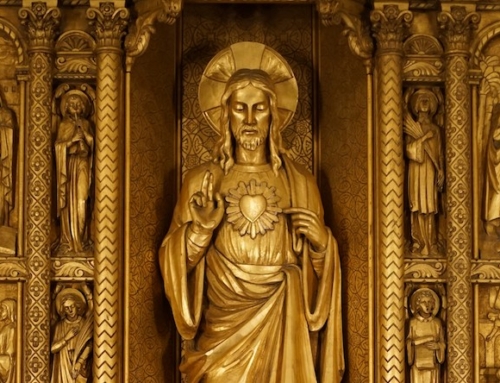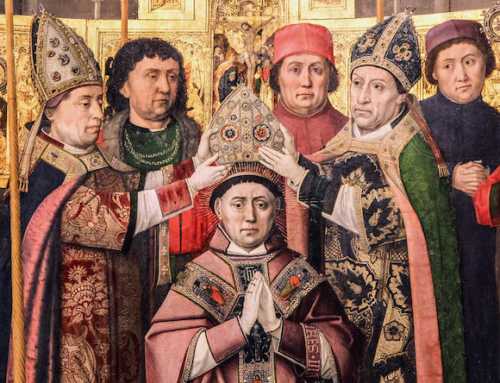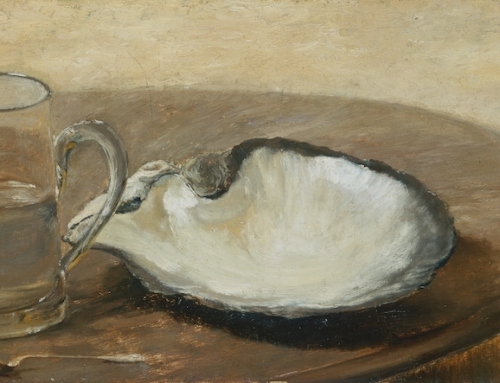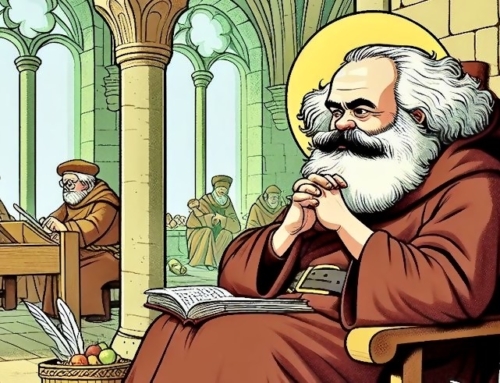Lectio Divina: A Meditation on the Gospel
With the Gospel reading from the upcoming Sunday Mass as its principal source-text, each Lectio Divina (“Sacred Reading”) essay offers a prayerful meditation of the Sacred Scriptures—one which draws from the wealth of biblical literature, as well as the prayer life of the individual author. This Lectio Divina essay, however, gives a general note about this form of praying with the Scriptures.
Editor’s Note: The annual cycle of biblical books listed below is taken from the 9th century ordo Romani XIII, and the reasoning for the assignment of books to certain seasons from the 13th century liturgical commentary of William Durandus.
—
Lectio divina is the prayerful reading of Sacred Scripture, but this article isn’t concerned with what it is or how to do it (for that, see this earlier post). Instead, I want to share a time-tested plan for what books to read when: the annual cycle of biblical books read at the Night Office, sometimes also called Matins.
Developed between the 6th and 9th centuries, this cycle was designed to allow priests and religious to read through the whole Bible in a year. It did so by assigning specific books to certain liturgical seasons (excluding the Psalms, said weekly, and the Gospel, which were heard at Mass) and was so popular that, by the 10th, it was near universally adopted in the Latin speaking world.
Now, you might be wondering why a plan, and specifically a liturgical plan, is a useful or even desirable aid for lectio divina. As a form of private prayer, one of its strengths is precisely the freedom it brings, the freedom to go at your own pace and to choose the books you want to read. But once you’ve finished reading the Gospels, which everyone recommends as a starting point (and a great one at that!), and as the months and years tick on, it can get tiring to always have to choose the next book. It also usually means that there isn’t a connection with the liturgical year, and runs the risk that you might not ever read the whole Bible (I mean, who would ever really choose to read 2 Chronicles…).
It’s on this point that I’ve found the annual cycle of books to be such a great help. It covers every book of the Bible except the Psalms and Gospels. It’s also not a random distribution but assigns books to seasons according to a certain reasoning connected with the liturgical year. Yet, precisely because the cycle doesn’t assign passages to days, but books to seasons, it also has a great degree of built-in flexibility that’s perfect for a private prayer like lectio divina.
So, what is this time-tested plan for what to read when?
The book of the prophet Isaiah is assigned to Advent, since he speaks more clearly than all the others about the coming of Christ—to such an extent that St. Jerome thinks we should regard him more as an evangelist than a prophet!
Following this, from Christmas until the third Sunday before Lent, the thirteen letters of St. Paul and the book of Hebrews are read because, like the star that revealed Christ, the letters speak especially about the faith by which we know Christ.
Then, from the third Sunday before Lent (Septuagesima Sunday) through the fourth week of Lent the Heptateuch is read (Genesis, Exodus, Leviticus, Numbers, Deuteronomy, Joshua, Judges [and Ruth]). This time of the year mystically represents our captivity to sin, our punishment, and our guilt, from which we ought to return to Jerusalem. Thus, the books that treat the creation and fall of man, the expulsion from paradise, the calling of Abraham, the captivity in Egypt, and the return to the Promised Land are assigned to this time.
The prophet Jeremiah is assigned to the final fifteen days of Lent both because he spoke more openly of the Passion of Christ, and because he prefigured that passion in his own person. The Lamentations of Jeremiah are reserved specifically for the final three days: Holy Thursday, Good Friday, and Holy Saturday.
During the Easter season, the book of Revelation and the canonical epistles (James, 1 & 2 Peter, 1, 2 & 3 John, and Jude) are read until the Ascension: Revelation, because it especially reveals the mysteries of the passion and resurrection of Christ, and the canonical epistles because they were written by the Apostles who saw and were taught by the risen Lord. Then, from the Ascension until Pentecost the Acts of the Apostles are read because they show the works of those who have been filled with the Holy Spirit.
The last and longest stretch of time runs from Pentecost until the beginning of Advent and signifies the time of our earthly pilgrimage. The readings were assigned in this period so as to provide an instruction in how to fight the battles of this present life. Arranged according to the ancient rhetorical principle that deeds (examples) move more than words (teaching), the first books assigned to this period contain the examples, both good and bad, of those who fought for the Lord (1 & 2 Samuel, 1 & 2 Kings, and 1 & 2 Chronicles). Then, in August, the Wisdom Literature is read (Proverbs, Ecclesiastes, Song of Songs, Wisdom, Sirach) as an explicit teaching on how not only to fight, but to fight well the battles of this life. September and October return to the example of holy men and women, this time examples of perfection in virtue (Job, Tobit, Judith, Ester, Ezra, and Nehemiah: September) and of martyrdom (Maccabees: October).
Finally, the cycle comes to a close in November with Ezekiel, Daniel, and the twelve Minor Prophets, who speak of the final coming of Christ. In doing so, they also issue a call to repentance, a return to the foundations of the faith, and so prepare for resuming the cycle in Advent once again.
One of the great things about this annual cycle—and knowing the wisdom behind it—is that it can help you not only to choose a book but also to guide your lectio divina. Approaching 1 Kings cold can be difficult. But knowing that the Church placed it in July to provide us with examples can help us focus on the vices to avoid (for example, David’s lust) and the virtues to emulate (for example, David’s repentance). And when the cycle is taken as a plan for lectio divina, not liturgy, there’s also no pressure to finish each book assigned to a season in one year. If you only make it through Proverbs and Ecclesiastes one August, you can just pick up with Wisdom and Sirach the next.
Click here for a chart outlining the annual cycle of biblical books.
✠
Photo by Myriams-Fotos







